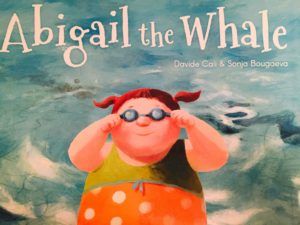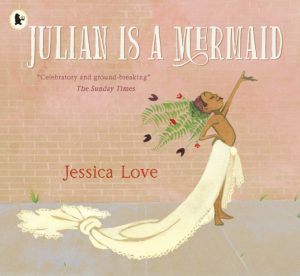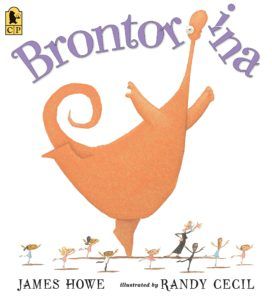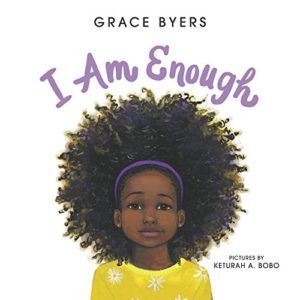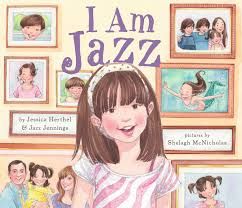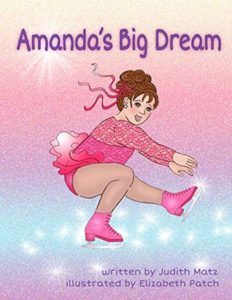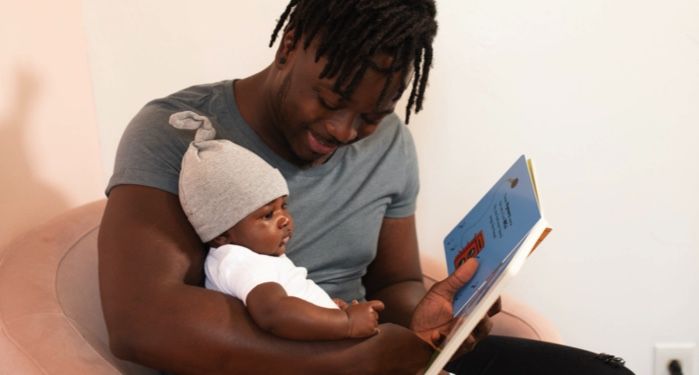
11 Body Positive Children’s Books To Read During Quarantine
Long before I actually had children, I knew that if ever I became a mother, my partner and I would want to teach our kids principles of radical self-acceptance. We would tell them about “body positivity” in its most valuable sense: a movement rooted in dismantling the prejudices (including but not limited to beauty standards) that harm the most marginalised among us. I would speak of my own fat body with nothing but affection, so that they might learn to speak of their own bodies — whatever they may look like at any given time — with the same language of care.
As we all adapt to a new “normal” in the face of global lockdowns, it’s only natural that many of us might be feeling anxious. There’s a lot to worry about, after all, including the possibility of losing our loved ones or of becoming ill ourselves. Some are concerned about job and housing security; others aren’t faring well in newfound loneliness. Many cannot help but wonder when this will all end; and what will be forever changed when it does.
Unfortunately, the transition to self-isolation is also exacerbating many people’s fears around their bodies. So pervasive are our cultural beauty standards and ideals of “worth” — all of which are rooted in fatphobia, racism, ableism, and homophobia/transphobia — that even as we navigate the question of our mortality in unprecedented ways, some folks continue to crack jokes about “coming out of quarantine fat” or otherwise “ruining their bodies” as their typical routines are shattered.
It would be wonderful if children didn’t pick up on these conversations, but of course they do. Body image battles can start as young as 5, and even before then, many kids learn that “fat is bad” or “skinny is good”; “pink is for girls,” or “blue is for boys”; this is “pretty,” and that is “ugly.”
Now that I actually have daughters, I spend a lot of time looking for books that might help us spread an alternative narrative, at least within our home. In this moment, we are all indoors more (and sadly navigating a bunch more casual body-shaming language as a result), so it seems to be an opportune time to introduce children to lessons of radical self-acceptance. These 11 books are some of my favourites.
Love Your Body by Jessica Sanders and Carol Rossetti
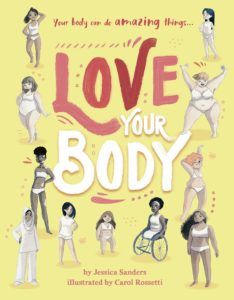
For kids already struggling with any kind of body-shame, the book also includes tips for self-care. It even offers advice for what kind of language to use in the face of negative body commentary. Love Your Body is truly a celebration of all the things our bodies can do, even when the things our bodies can do look different to the things other bodies might be able to do.
ROT: The Cutest In The World! by Ben Clanton
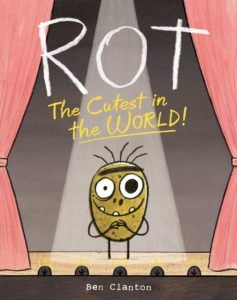
It’s a simple but incredibly effective tale of inner beauty and self-worth, in which Rot learns that our bodies are not nearly as interesting as the personalities housed within them.
Hair Like Mine by LaTashia M. Perry and Bea Jackson
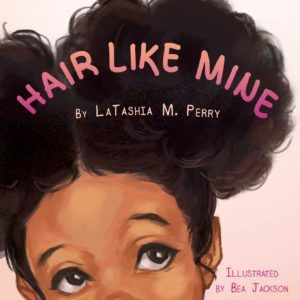
In a world still full of Disney princesses like Anna and Elsa — white, with long, “flowing” or “silky” locks — and such few mainstream representations of natural hairstyles, this one is definitely a necessary read for anyone struggling to see the worth in their Afro-textured strands.
Abigail The Whale by Davide Cali and Sonja Bougaeva
Abigail The Whale, written by Davide Cali and illustrated by Sonja Bougaeva, showcases just how terrifying mundane, everyday activities can be for fat children. Even though Abigail loves to swim, she is afraid of jumping into the pool for fear of causing a big splash. The other kids tease her, saying “Abigail is a whale,” every time she does so.
Abigail begins to learn that feeling secure in herself might be possible through a shift in her mindset. She may not be able to stop the children from being fatphobic, but she can embrace being a “super whale” who makes wonderfully large splashes.
Julián Is A Mermaid By Jessica Love
As visually stunning as it is heartwarming, Julián Is A Mermaid, written and illustrated by Jessica Love, is a must-read for anyone, but especially for little boys who have been made to feel “too girly” or “too much.”
The most beautiful part of the story is arguably the relationship between Julián and his Nana. Nana is a source of unconditional support. When Julián begins to show his love of mermaids and all things femininity, it is Nana who takes him to a place where he can be among many other beautiful mermaids, proving that self-love truly does start at home.
Brontorina by James Howe and Randy Cecil
Written by James Howe and illustrated by Randy Cecil, Brontorina tells the story of a lovely dinosaur who is made to feel “too big” for ballet class. Even though the other children scowl and tease when Brontorina takes up “too much space,” her dance instructor Madame Lucille soon teaches the lovely orange dinosaur that there is no such thing as a person or creature that’s “too big,” but rather spaces and minds that are too small.
Much like in Julián Is A Mermaid, this book shows just what a difference a supportive, inclusively minded adult can make in the life of a child.
I Am Enough by Grace Byers and Keturah A. Bobo
Written by Empire actress Grace Byers and illustrated by Keturah A. Bobo, I Am Enough is described as a “lyrical ode to loving who you are,” and it truly is. The book will teach readers about all of the beautiful things we can do — like learn, sing, and dream — when we are kind to ourselves and to each other.
Through illustrations that showcase all kinds of children of all kinds of abilities, races, and sizes, it shows just how much wonderment, fun, and joy are on the horizon when we respect ourselves and those around us fully.
I Am Jazz by Jessica Herthel and Shelagh McNicholas
Written by Jessica Herthel and YouTube star and LGBTQ activist Jazz Jennings, and illustrated by Shelagh McNicholas, I Am Jazz is a beautiful story that will introduce some children to what it means to be transgender while affirming others who are beginning to grapple with their own gender identity.
In the story, having the support of her parents makes all the difference in Jazz’s journey. Even though she encounters teachers who don’t “get it,” and a school environment that wants her to use the boys’ bathroom or play in boys’ sports, Jazz has an established foundation for self-acceptance at home. She is proud of her differences.
Amanda’s Big Dream by Judith Matz and Elizabeth Patch
Written by Judith Matz and illustrated by Elizabeth Patch, Amanda’s Big Dream teaches us that just as our insecurities are learned behaviours, they can be unlearned. Amanda is a joyful ice skater who feels at ease within her body, until her coach suggests she lose some weight in order to get even closer to the ice during a spin.
Thankfully, Amanda has the kind of doctor and parents that all children should have — kind, empathetic people who know that worth and health do not begin and end with body size — and she is able to eventually overcome the bigotry she has encountered and rekindle her love for the sport.
Celebrate Your Body (And Its Changes, Too!) by Sonya Renee Taylor
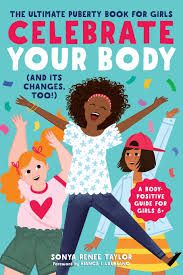
There is a lot of cultural conditioning out there that teaches girls to feel ashamed of their developing bodies: be it their body hair, their blood, or any fat deposits that might appear on their figures. This guide will counter all of those messages in a way that’s fun, accessible, and completely inspiring.
What Would Fashion Look Like If It Included All Of Us? by Amanda Richards and Alison Hawkins
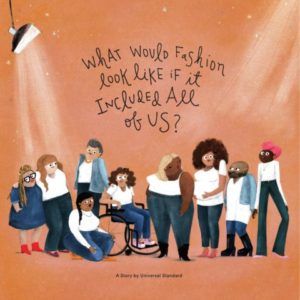
For children interested in fashion and dress-up, but unsure of whether the industry is interested in them, this book will show just how much magic happens when we shut out the voices that tell us who should wear this or who should wear that — and when we simply dress ourselves for the joy of it. The illustrations beautifully celebrate the beauty in all bodies, of all abilities, sizes, races, and identities.



